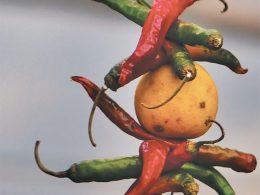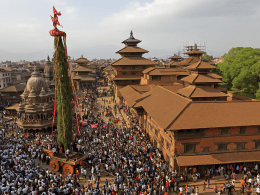Every autumn, as Nepal prepares for Dashain, the air fills with the joyful notes of Malashree Dhun, also known as Dashain Dhun or Mangal Dhun. This devotional tune, originating from the Newar community of Kathmandu Valley, has echoed through generations for over 450 years. It does more than entertain—it heralds the arrival of Dashain, invokes blessings, and connects people to Nepal’s rich cultural heritage.
Tracing the Roots of Malashree Dhun
The story of Malashree Dhun begins in the 16th–17th century during the Malla dynasty. Initially, it existed as a collective devotional song, called Dapha or Dapa bhajan, deeply rooted in the Newar classical music tradition.
The earliest reference to this dhun appears in Sangit Chandra, a treatise compiled under King Jagat Jyoti Malla of Bhaktapur and his minister Vanshamani Ojha. This book outlines the musical structure, devotional purpose, and cultural importance of Malashree Dhun.
While the exact composer remains unknown, the dhun clearly evolved through the royal patronage of the Malla kings and Newar musical communities.

King Mahindra Malla of Kantipur is believed to have supported its devotional use, and later, Siddhi Narsingh Malla helped popularize it by performing it in temples like Nritya Nath in Hanumandhoka during Dashain. When Prithvi Narayan Shah unified Nepal, the tune transcended Kathmandu Valley and became part of the Shah dynasty’s ceremonial music, spreading across the country.
Meaning and Symbolism
The name “Malashree” carries deep significance. Here, “Mal” means goods or prosperity, and “Shree” refers to blessings, especially those of Goddess Lakshmi. Together, the term embodies prosperity, peace, and spiritual blessings, aligning perfectly with the festive spirit of Dashain.
Furthermore, Malashree Dhun is one of six seasonal dhoons in Newar tradition. Each dhoon marks a different season, and Malashree Dhun specifically celebrates autumn and Dashain, inviting joy, devotion, and cultural unity into homes and temples. During the festival, it is played during Tika ceremonies, temple rituals, and community programs, making it a cherished tradition.
Musical Characteristics

Malashree Dhun comes alive through classical instruments like:
- Sitar
- Tabla
- Taa
- Dhimay
- Flute and Sarangi (subtle accompaniment)
The tune follows a structured raga, evoking feelings of joy, devotion, and festivity. Over time, contemporary musicians have added guitars, drums, and pianos, blending modern styles with classical essence. Despite these innovations, the dhun’s core spirit and devotional mood remain intact, connecting listeners to centuries of tradition.
How Malashree Dhun Became a Cultural Icon
Thanks to its royal patronage and deep-rooted cultural significance, Malashree Dhun gradually transitioned from temple halls to the hearts of all Nepalis. As the Shah dynasty adopted it, the tune spread nationwide. Newar families carried it to other regions, like Gorkha, ensuring its presence beyond Kathmandu Valley.
In recent decades, modern artists such as Sur Sudha and Kutumba have revived and reinvented the dhun. They mix traditional rhythms with contemporary harmonies, making it relevant for today’s audiences while preserving its spiritual essence. Through fusion renditions and multimedia presentations, Malashree Dhun continues to celebrate Nepali identity, devotion, and festive culture.
Modern Renditions

- Sur Sudha: Combines classical and contemporary instruments, keeping the devotional tone intact.
- Kutumba: Blends Newar rhythms with modern harmonies, appealing to younger audiences.
- Festivals and Cultural Programs: The tune is widely used in Dashain celebrations across Nepal, symbolizing prosperity and unity.
These adaptations ensure that the dhun remains vibrant and relevant, connecting new generations with Nepalese traditions.
Conclusion
Malashree Dhun is more than music—it is a living emblem of Nepal’s culture, devotion, and festive spirit.
Originating from the Newar musical tradition over 450 years ago, it has evolved through royal patronage, temple rituals, and contemporary reinterpretations. Every note carries blessings, joy, and history, making it an integral part of Dashain celebrations.From temples to royal courts, from traditional instruments to modern fusion, Malashree Dhun continues to unite Nepalis in devotion, celebration, and cultural pride, remaining timeless in its melody and meaning.
See Nepal in every scroll: Follow us on Facebook, Instagram, and TikTok for stories that bring the country to life.









